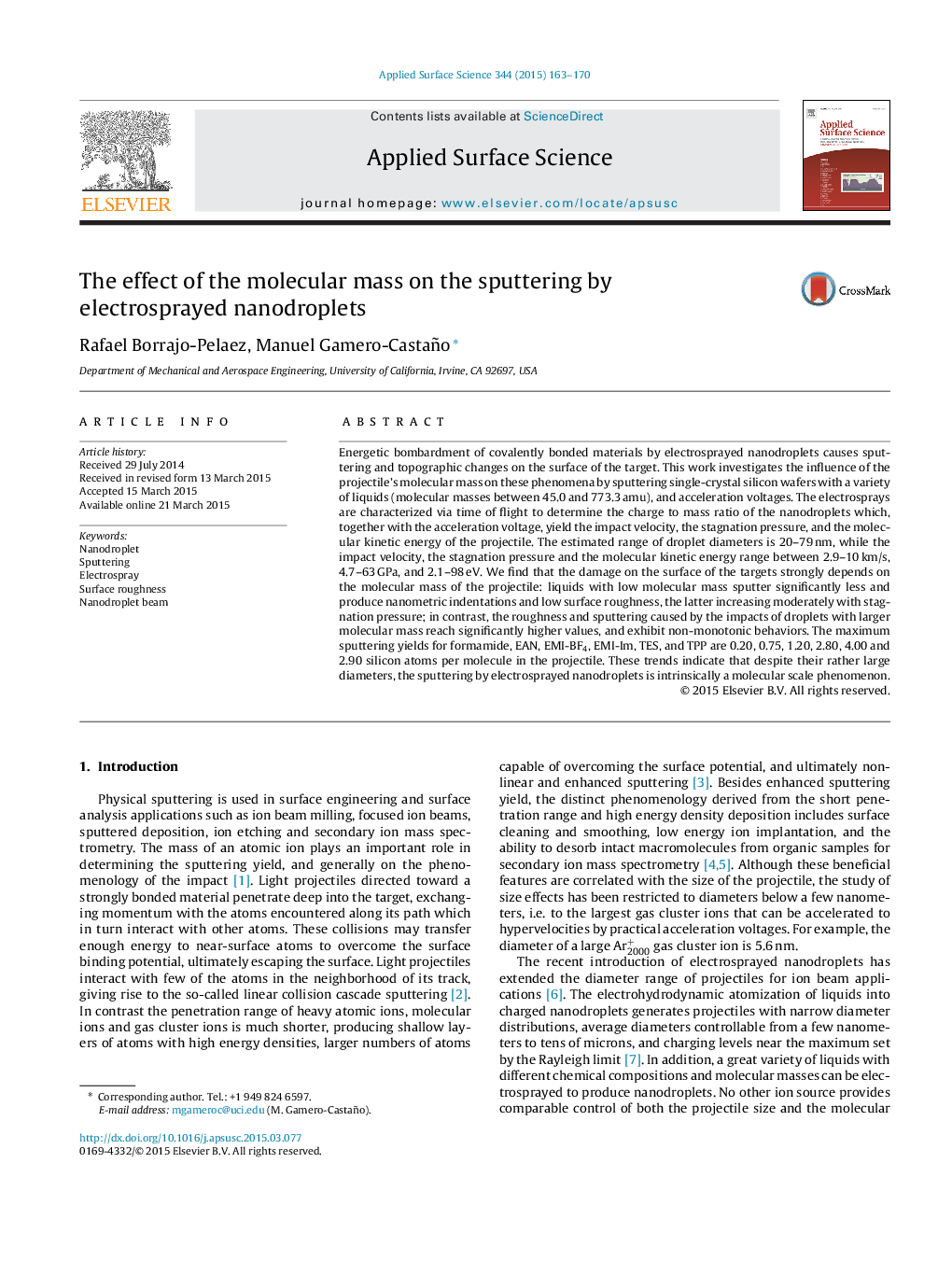| کد مقاله | کد نشریه | سال انتشار | مقاله انگلیسی | نسخه تمام متن |
|---|---|---|---|---|
| 5349468 | 1503620 | 2015 | 8 صفحه PDF | دانلود رایگان |
عنوان انگلیسی مقاله ISI
The effect of the molecular mass on the sputtering by electrosprayed nanodroplets
ترجمه فارسی عنوان
اثر توده مولکولی بر روی اسپری شدن توسط نانوذرات الکترو اسپری
دانلود مقاله + سفارش ترجمه
دانلود مقاله ISI انگلیسی
رایگان برای ایرانیان
کلمات کلیدی
موضوعات مرتبط
مهندسی و علوم پایه
شیمی
شیمی تئوریک و عملی
چکیده انگلیسی
Energetic bombardment of covalently bonded materials by electrosprayed nanodroplets causes sputtering and topographic changes on the surface of the target. This work investigates the influence of the projectile's molecular mass on these phenomena by sputtering single-crystal silicon wafers with a variety of liquids (molecular masses between 45.0 and 773.3Â amu), and acceleration voltages. The electrosprays are characterized via time of flight to determine the charge to mass ratio of the nanodroplets which, together with the acceleration voltage, yield the impact velocity, the stagnation pressure, and the molecular kinetic energy of the projectile. The estimated range of droplet diameters is 20-79Â nm, while the impact velocity, the stagnation pressure and the molecular kinetic energy range between 2.9-10Â km/s, 4.7-63Â GPa, and 2.1-98Â eV. We find that the damage on the surface of the targets strongly depends on the molecular mass of the projectile: liquids with low molecular mass sputter significantly less and produce nanometric indentations and low surface roughness, the latter increasing moderately with stagnation pressure; in contrast, the roughness and sputtering caused by the impacts of droplets with larger molecular mass reach significantly higher values, and exhibit non-monotonic behaviors. The maximum sputtering yields for formamide, EAN, EMI-BF4, EMI-Im, TES, and TPP are 0.20, 0.75, 1.20, 2.80, 4.00 and 2.90 silicon atoms per molecule in the projectile. These trends indicate that despite their rather large diameters, the sputtering by electrosprayed nanodroplets is intrinsically a molecular scale phenomenon.
ناشر
Database: Elsevier - ScienceDirect (ساینس دایرکت)
Journal: Applied Surface Science - Volume 344, 30 July 2015, Pages 163-170
Journal: Applied Surface Science - Volume 344, 30 July 2015, Pages 163-170
نویسندگان
Rafael Borrajo-Pelaez, Manuel Gamero-Castaño,
